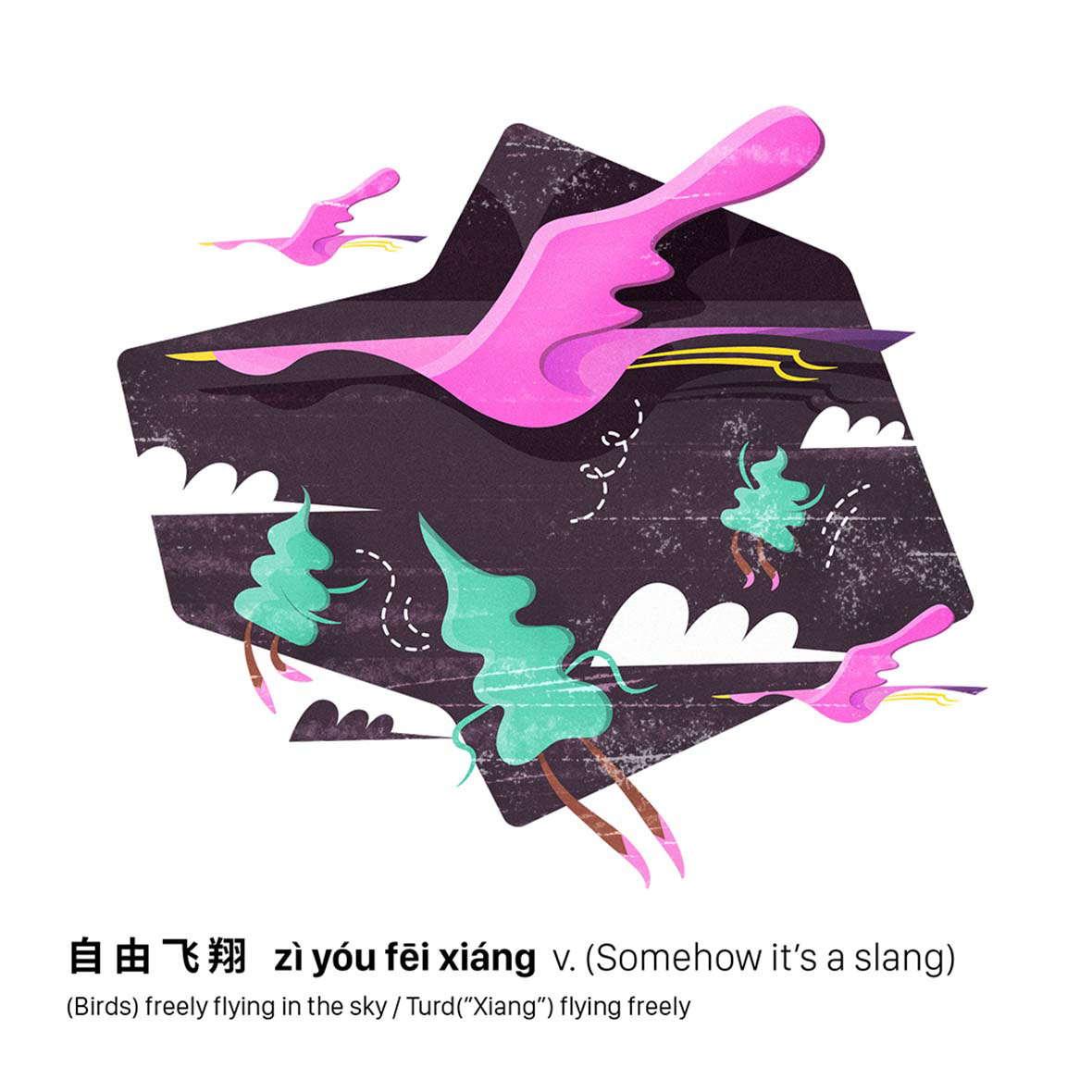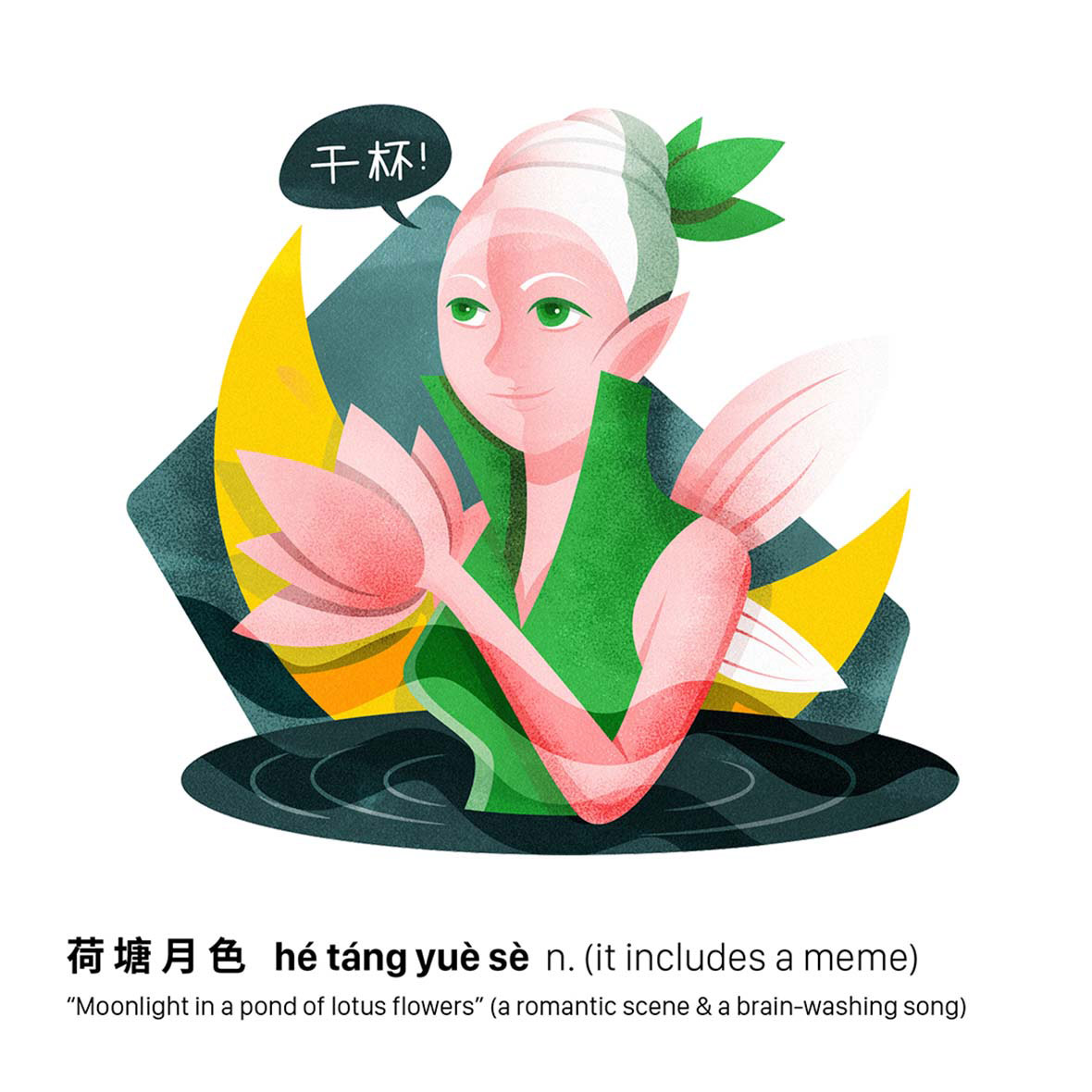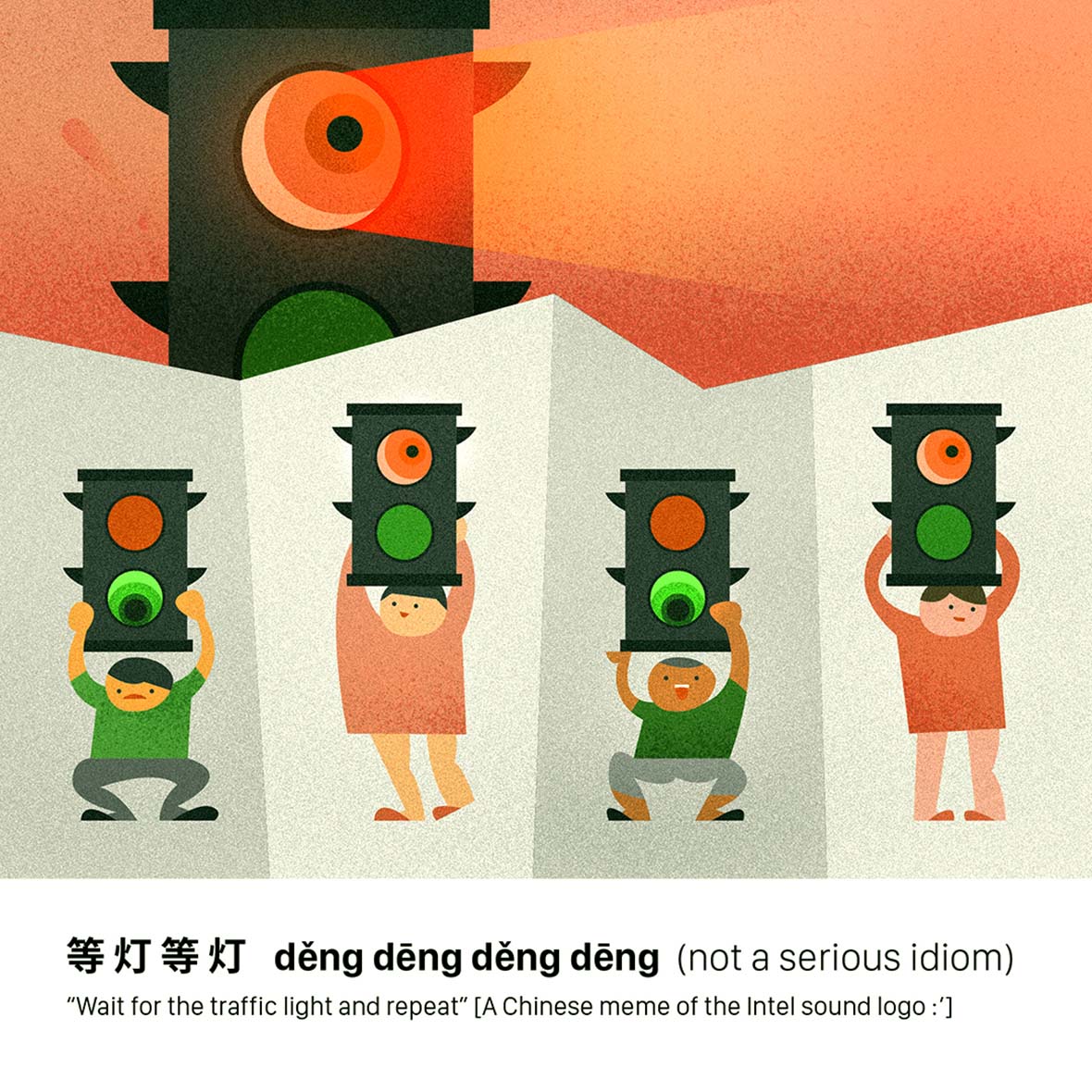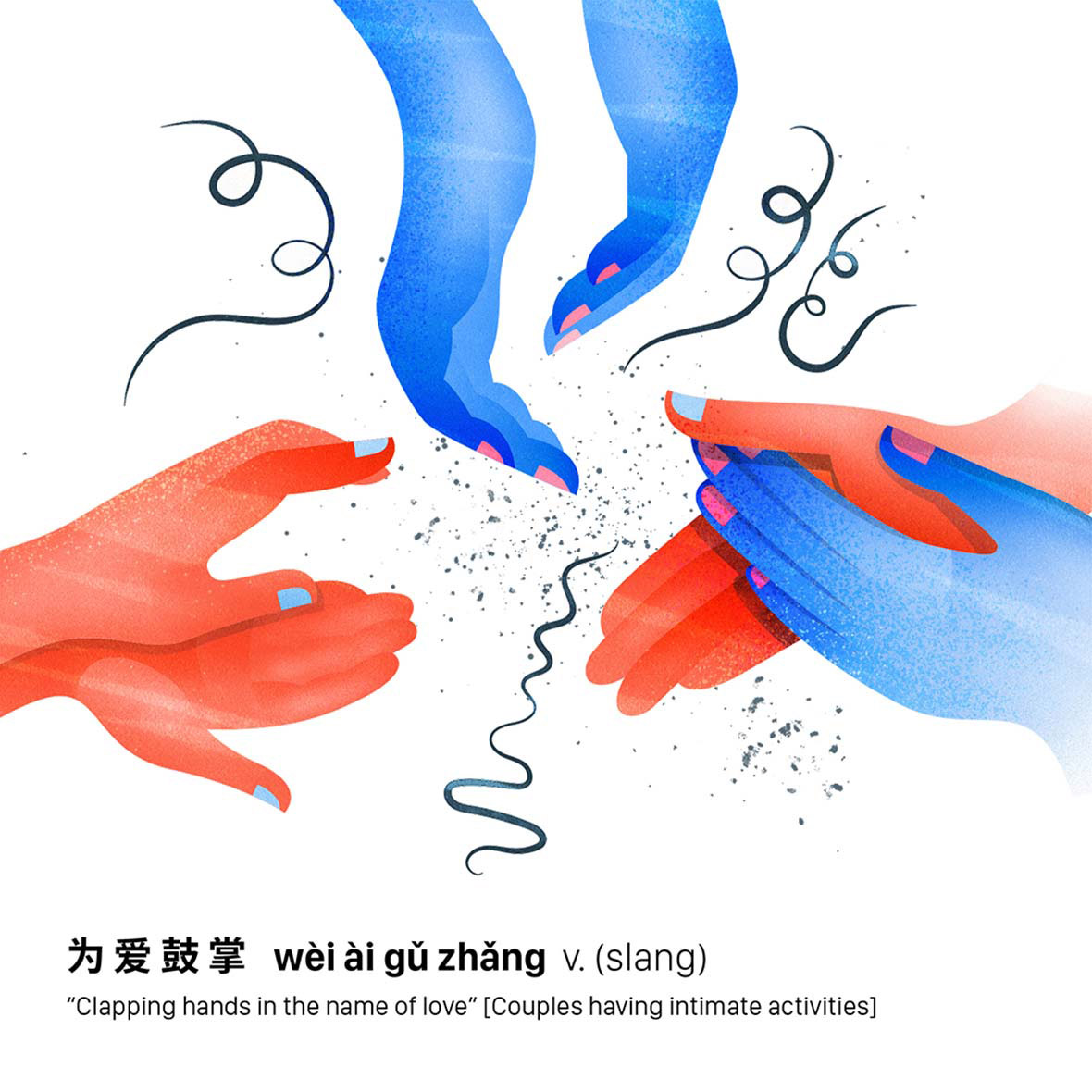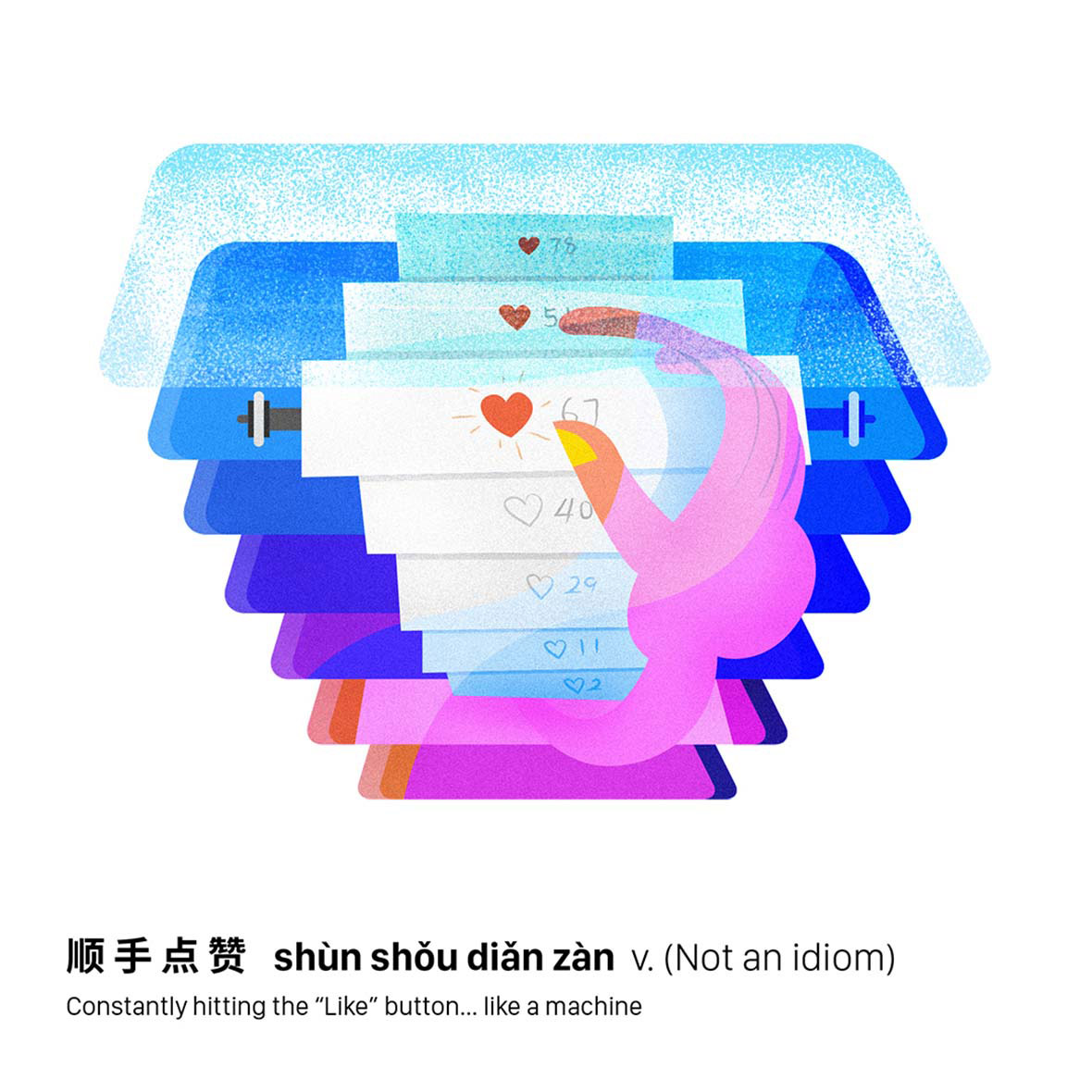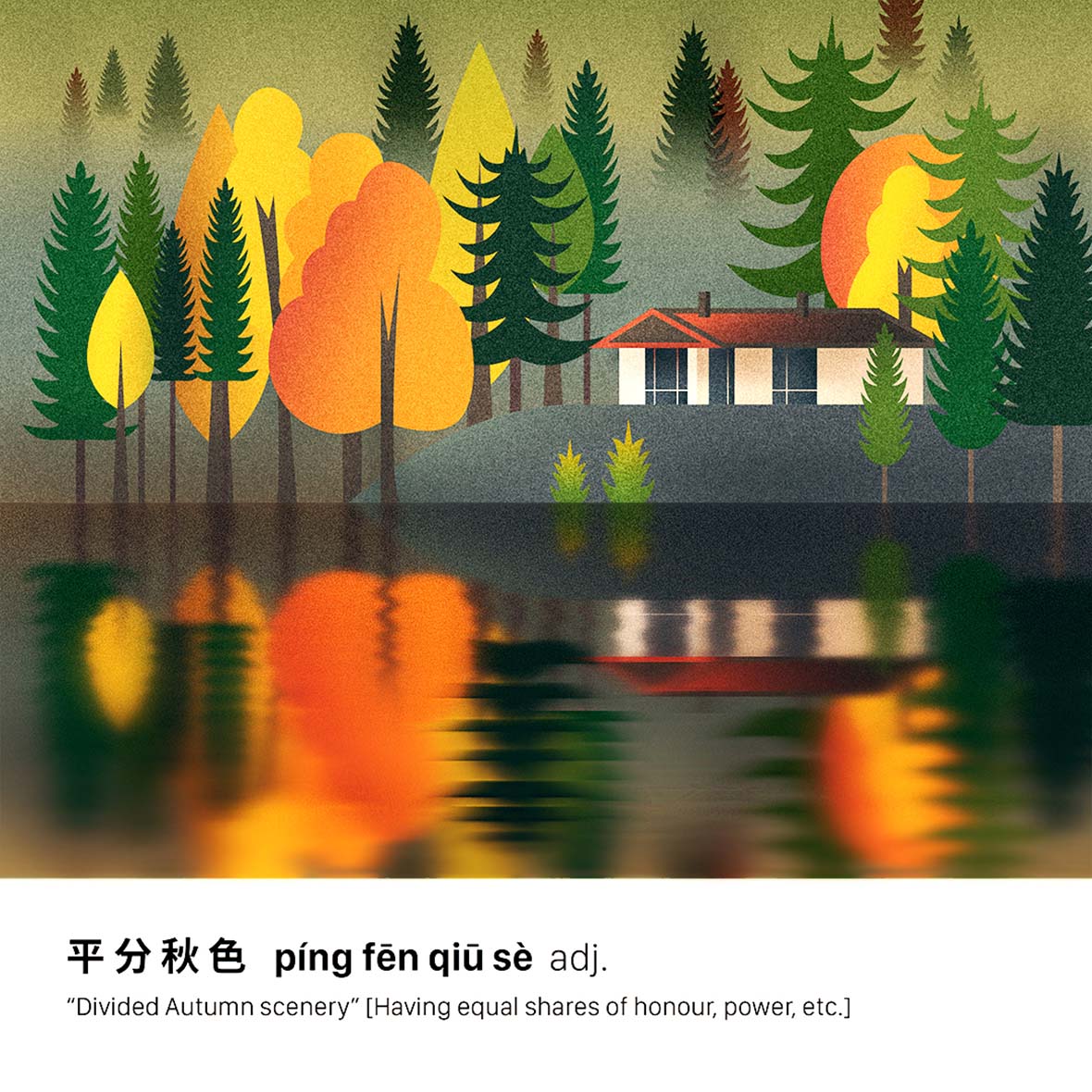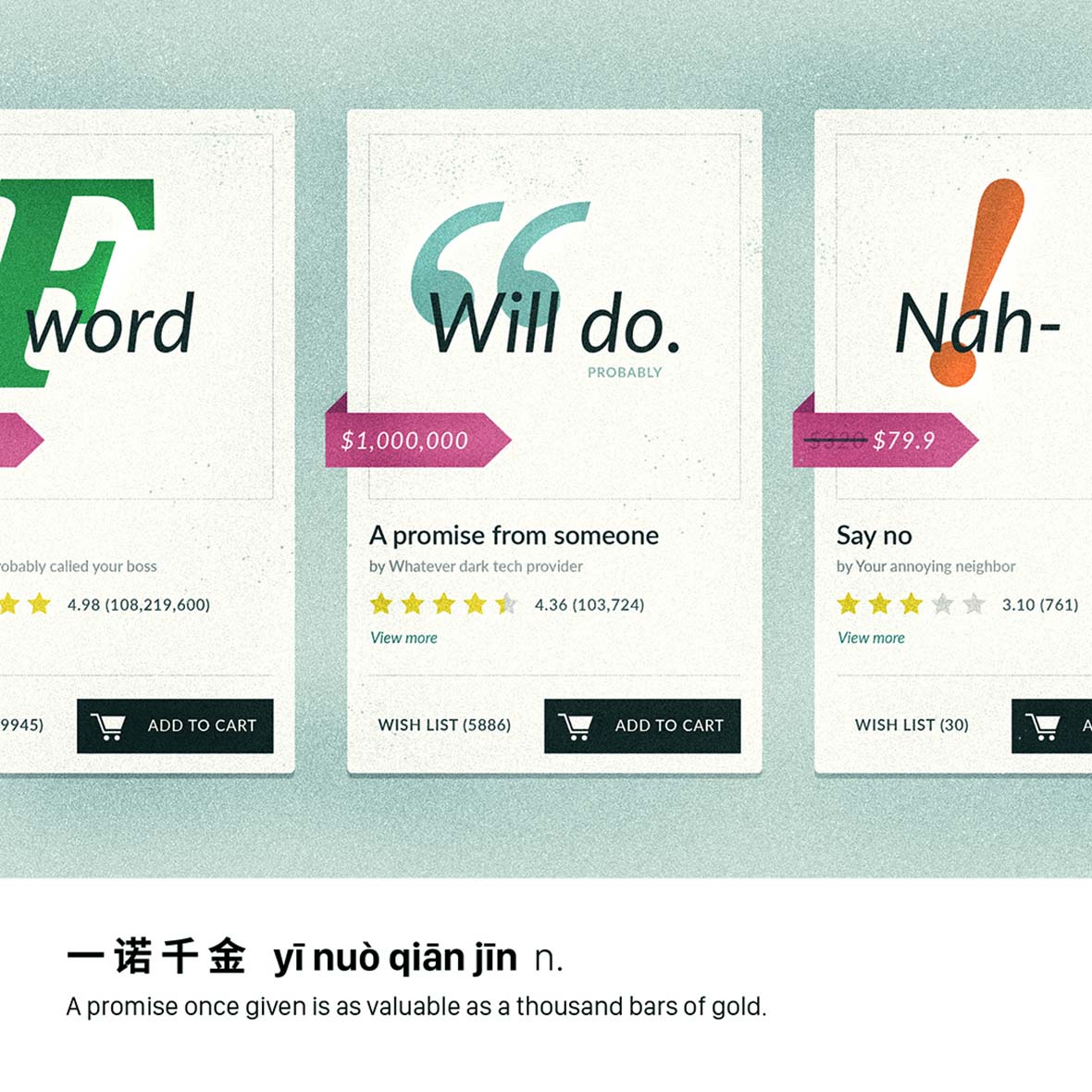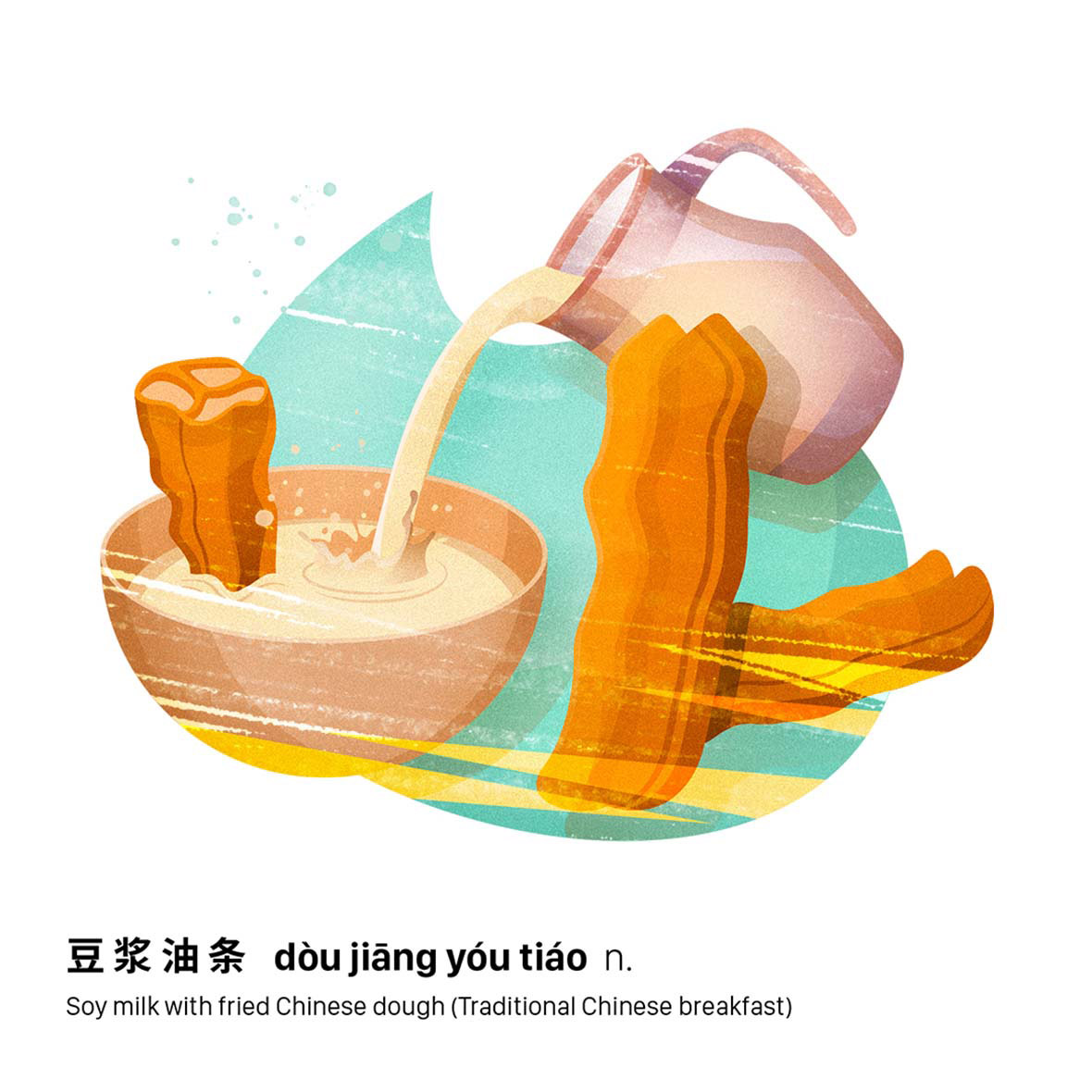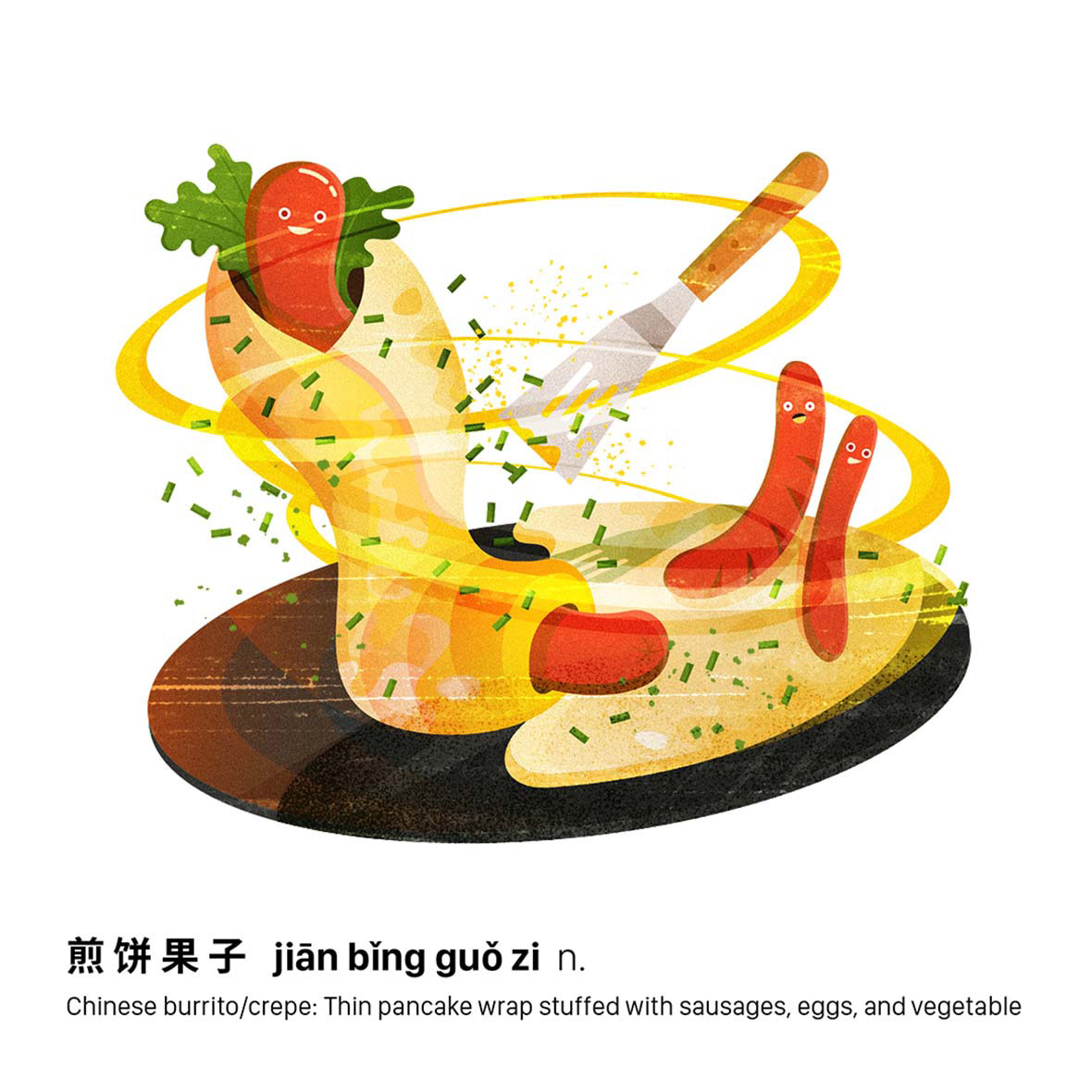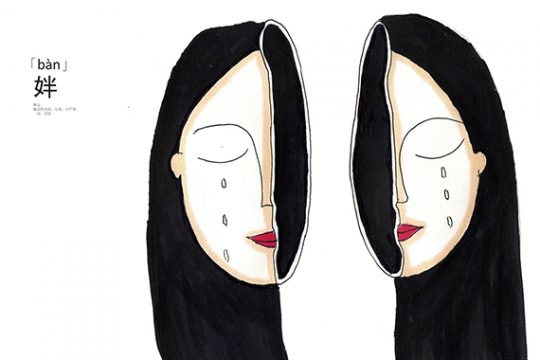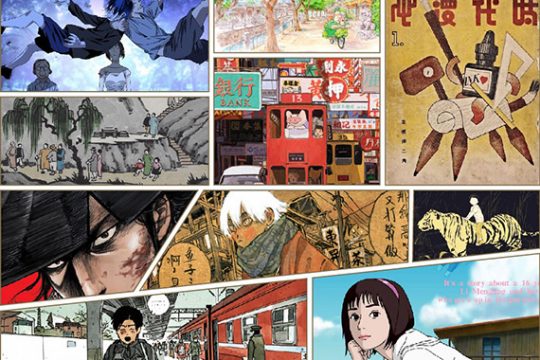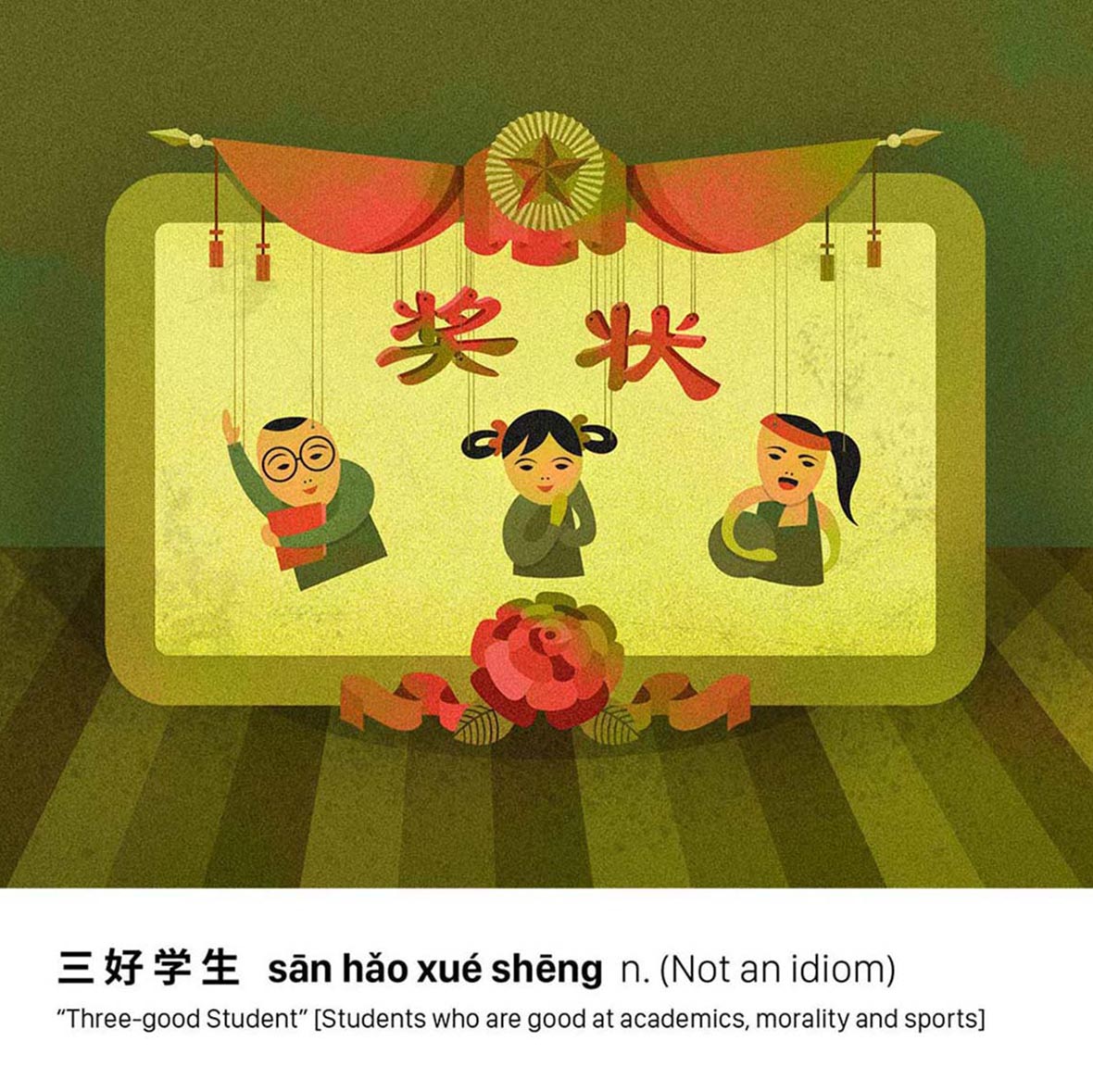
Mostly comprised of four characters, idioms, or chengyu, are one of the most beloved methods of expression in China. The appeal of chengyu lies in their power to convey complex and wordy ideas in a concise manner. But being that many of these phrases originated from ancient Chinese literature, they can, at times, be difficult to make sense of without an understanding of their original context. Luckily, the more convoluted expressions have all but faded from the colloquial lexicon in modern-day China, while many of the easier-to-understand idioms are still widely used.
Today, the internet has become a breeding ground for linguistic creativity. Chinese netizens have begun cleverly crafting their own four-character phrases that follow the formula for traditional idioms. One such phrase birthed by the internet is rén jiān bù chāi (人艰不拆), which translates to “life is already hard enough as is, just cut me some slack.” It’s most often used in a jestful manner. Another quirky internet expression that’s made the rounds in recent times is kōu jiǎo dà hàn (抠脚大汉), which is equivalent to “catfishing” in American slang, but it’s tailored to specifically refer to a man pretending to be a woman.
Similarly, many emojis and stickers used in Chinese messaging apps have followed this trend. Images accompanied by four or five-character phrases are commonplace; they’re used to add humor or alter the expression’s original meaning. While much of these are basically Chinese memes, they serve as a testament to the linguistic versatility and nuanced possibilities of the Chinese language. Designer and recent college graduate Xia Ruolan found herself intrigued by the evolution of these expressions, and in wanting to help explain their meanings to a Western audience, she created Four Chars, an illustration project that translates and simplifies some of the more commonly seen four-character Chinese phrases.

In the early days of Four Chars, Xia mainly used the project as a way of setting aside personal time for herself after work, a way to unwind from her stressful days. Xia recalls the many trials and tribulations that she experienced within the first year of her career: She underwent four different boss changes, switched departments three times, and even had to relocate to another country. But aside from helping her cope from the stresses of work, and perhaps more importantly, the project was a way for Xia, who’s spent much of her life abroad, to reconcile with her cultural roots.
“It may seem like being independent and living in a new country is a liberating experience,” she tells us. “But the truth of the matter is, it felt like I was running into dead ends everywhere.”
Being that Xia’s mother tongue is Chinese, Xia often found herself unable to fully articulate certain ideas in English. Out of these frustrations, she gained a newfound appreciation for the depth and versatility of the Chinese language. Xia wanted a way to share the beautiful subtleties and complexities of her native language with the world but needed to figure out an easily accessible approach. Noting the vast amounts of four-character expressions that exist nowadays, Xia came up with the idea to use illustration to offer easy-to-understand explanations for these common Chinese phrases, and thus, Four Chars was born.
最初创作“四字画语”的原因,有一部分正是源于夏若兰“在异国他乡独自生活,出于平复心态、提升自己的需要”而为之。夏若兰说,工作还没满一年,她就换了四个老板,调了三次组,在两个不同国家工作。“一个人在一个陌生的国度生活,好像有无限的自由,但也却处处是边界。”
作为一个中文母语者,夏若兰说,她不时会面临“有货倒不出”的困窘。有些略带俗气的双关词语,让夏若兰一再感受到汉语词汇的广博且“充满弹性”(雅俗共赏)的内涵。这也让她产生了某种“使命感”,要让汉语的丰富含义更加平民化地传播。加之夏若兰发现 Instagram 上“汉语学习”专题与“插画”专题相交叉的一个市场空白,每四个汉字都可能是一个触发点,画面的创作空间非常广阔。“四字画语”就此诞生了。

From fine art to movies and video games, Xia’s inspiration comes from a variety of different sources. “One time, I was cooking something with Sriracha. I was just staring at the bottle of red sauce, and the idiom rè huǒ cháo tiān (热火朝天) popped up in my head mind. At the same time, an image of René Magritte’s surrealist paintings surfaced in my mind. Combining the two, I came up with the idea to draw a bunch of Sriracha rockets flying into the sky as a way of presenting the idiom.”
要说灵感的发源,艺术家的作品、电影游戏的画面,都会成为夏若兰的启发点,“有一次我用 Sriracha 辣酱(中国好像买不到,但在海外很火的‘中国特色’辣酱)做晚饭,看着红红的瓶身,就想到了‘热火朝天’那个词。脑海中又有超现实主义艺术家雷内・马格里特(René Magritte)的经典画作,于是就画出了一大堆辣酱瓶子因为自身太辣变成了火箭往天上飞的场景。”
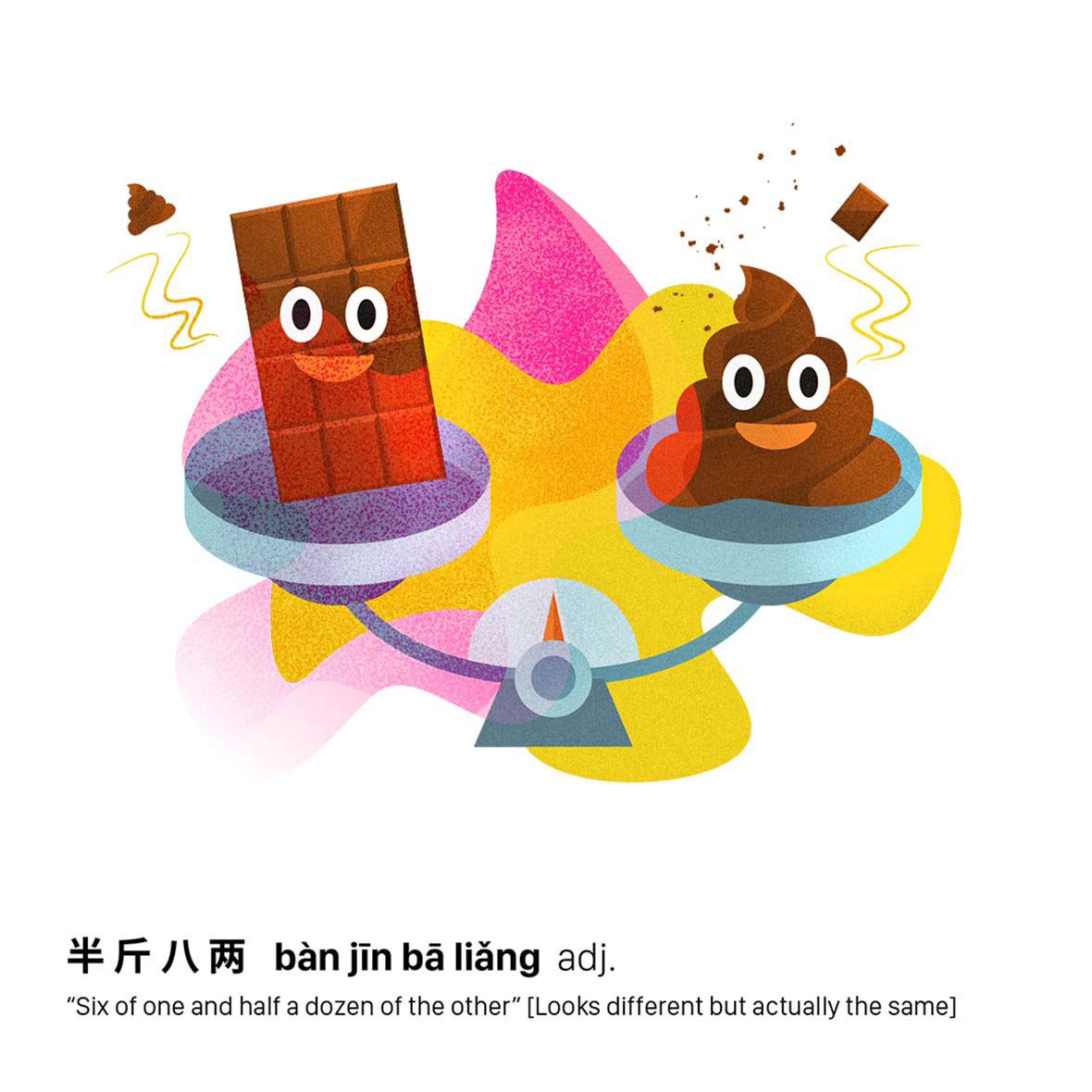
Xia acknowledges that conceptualizing and executing the illustrations aren’t the toughest steps of the creative process. The most challenging part lies in the fact that there are lots of four-character phrases that simply cannot be explained in a sentence or two. “In most cases, I have to simplify the full meaning; if the dictionary doesn’t explain the literal meaning or breakdown underlying connotations of the phrase, I also have to figure out how to add it in. My boyfriend will often help out too and fix up my ‘Chinglish.’” Xia says, grinning. “But when I’m trying to translate these idioms, it’s not just about their meaning. The most important thing is to explain why its an interesting phrase.”
One of the quirkier phrases Xia covers in the series is “děng dēng děng dēng (等灯等灯),” a four-character onomatopoeia that references Intel’s iconic jingle. The first and third character, děng (等), means wait. The second and fourth character, dēng (灯), means light. Her illustrations present a literal interpretation of the phrase with characters holding traffic lights. This expression is most often used as playful banter between friends and simply means “wait” or “hold on a minute.”
Another phrase Xia enjoyed working on was wèi ài gǔ zhǎng (为爱鼓掌), which is a double entendre. Its literal meaning is “clap in the name of love,” but in Chinese, the onomatopoeia for clapping – “pa, pa, pa” (啪啪啪) – is associated with the sounds of intercourse (or specifically, the sound of skin slapping against skin). The expression is essentially used as a euphemism for talking about sex. Taking into consideration of the fact that many people might not understand the dual meaning of the phrase, she decided to approach the illustration and definition in a literal manner. Another point she took into consideration is that if she were to present the true meaning through illustration, it’d most likely result in a raunchy image that could be censored by Instagram. Xia tells us, “It was fun to look at the comment section for this post,” she says. “Many people who’re aware of the true meaning were cracking jokes with other double entendres.”
但往往最难的不是设计本身,而是那些无法用三言两语去解释的字词。“大多数情况是,自己把词典提供的释义进行略微的改动;如果词典没有提供引申义和字面义的,自己也需要补上。有时候在美国的男友也会帮忙改语法,以及改掉我比较 Chinglish 的部分。”夏若兰说,“在解释这些词的时候,不仅要解释字面义,还要解释为什么这个词是有趣的。”
比如源自于英特尔广告声音的“等灯等灯”,在形象化描绘了等待红绿灯的场景后,也需要融入声音的通感。又比如“为爱鼓掌”,一语双关。直接解释的话,鼓掌其实就是“啪啪啪”的声响,但夏若兰担心这么解释反会加深非汉语用户的理解难度;可要是直接诠释“啪啪啪”本意,则肯定要涉及到露骨画面,会被网络筛查。所以夏若兰在这时就用了更通俗易懂的方法去描述性爱。“有趣的是,这个词的评论区冒出不少人,他们用了相似的语言风格表露了他们作为老司机的一面。”
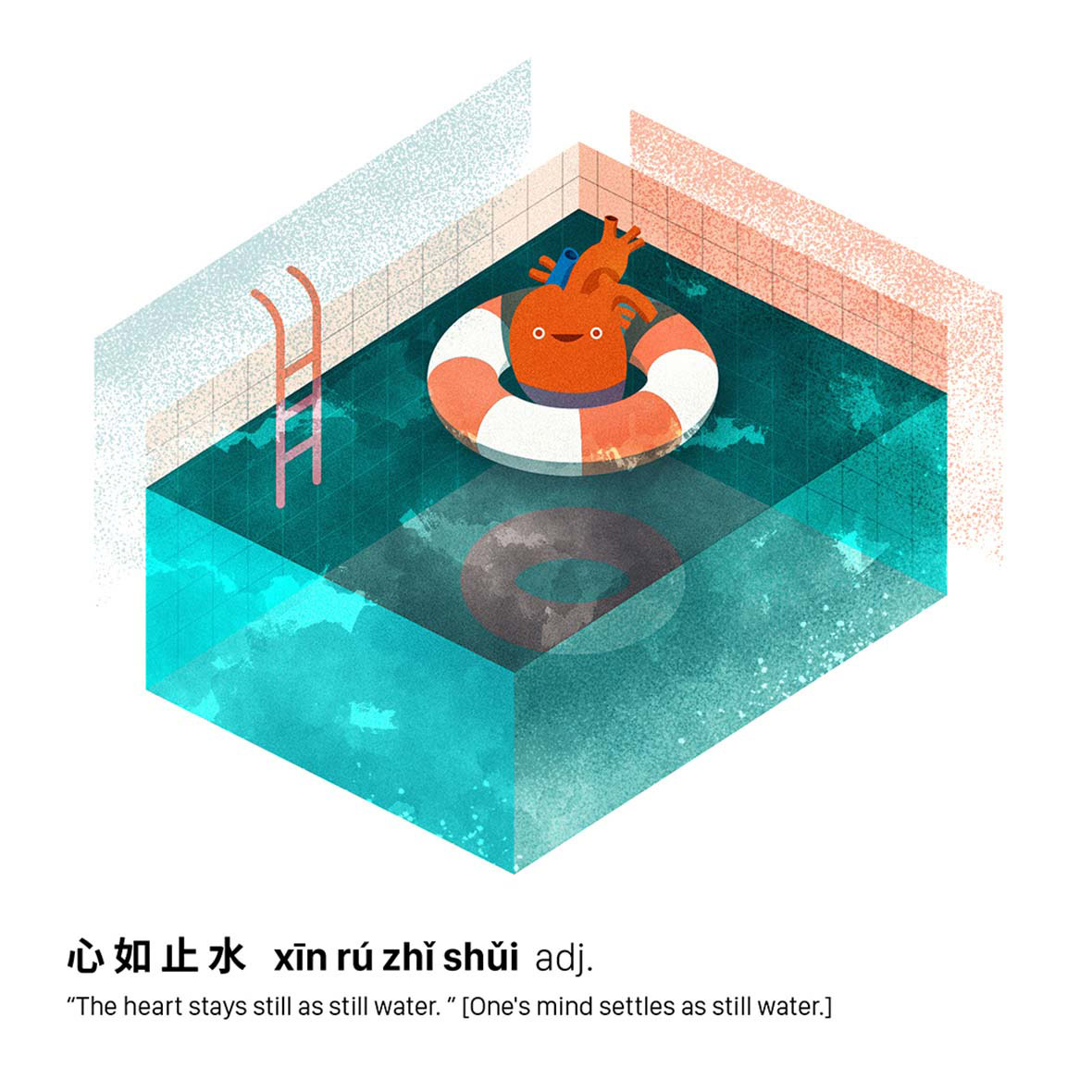
Having never been formally trained in art, Xia says this project is actually her first-ever attempt at dabbling with illustration. “While Four Chars has helped me a lot personally, it’s actually my first time ever doing something like this. It’s helped me with managing my stress, but in a way, it’s pretty much just escapism. […] I do feel a sense of elation and relief whenever I’m working on the project. It feels different from doing something just to kill time. There also aren’t any extreme ‘eureka’ moments nor do I experience creative stagnation; the project lets me channel my creativity in a pretty consistent way. I also get to experiment with new styles or aesthetics every day.”
Recalling what life was like before she began the project, Xia estimates that 90% of her time was spent figuring out how to be more effective, how to work faster, and how to get results. Being locked into this mentality led her to feel restless and irritable all the time. “So, as someone who’s always looked within for answers, I began asking myself how I could get out of this slump. I guess I hoped I could use the remaining 10% of my time to come up with an answer, and it turns out, Four Chars was the result of that – this project gave me a chance to work on something that didn’t necessarily need an end goal. It was time that I can use for my personal enjoyment and to better myself creatively. In a way, I’m grateful. If I didn’t face the hardships that I did, then I wouldn’t have come up with Four Chars. Its helped me find motivation in all aspects of my life.”
其实作为一个没有机会进行“艺术科班培训”的画手,夏若兰说,这是她第一次以插画师的身份来做项目。“当然,‘四字画语’给我带来的收益并不是十全十美的。它作为一个精神后花园,很大程度上会让我脱离对物理世界的体会(也会让我产生“幻觉”)……创作‘四字画语’带给我一种上升着的快感,和消磨时间的快感不同,它并不存在一个‘高潮’与高潮消退的阶段。每一天都可以尝试新的画风。”
因为之前受到种种压力的影响,夏若兰每天可能会有 90% 的时间在让自己加速、高效、出成果,需要做到“充实”。但这种“充实”却建立在浮躁本身的泡沫之上。“于是,习惯于独立思考的我立即开始向内心求助,祈求着那个 10% 的我的援助。‘四字画语’就是那个 10% 的时间,它给了我一个‘沉浸做一件事不求目的’的时间段,是一个享受匠人精神的时间段。如果没有之前的转折,就没有‘四字画语’的初心。它像是一个自我鞭策的存在。”


